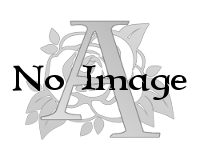Post Exodian
| Post Exodian | |
|---|---|

| |
| Culture | |
| Pronunciation | Poe-st-ex-oh-dee-an |
| Nicknames | Exodians |
| Origins | Exodia |
| Races | Human |
| Emphasis | Aristocracy, Gender Equality, Monarchy |
| Languages | Common |
| Major Cities | Rivera, Redemption City, Battalia, Fairwind Harbor |
The post exodian culture has it's roots in the original exodian culture present during the Exodian Era. While some elements of the ancestral root culture have survived centuries of change and diversification, the vast majority of traditions and customs held by ancestral exodians have been replaced with contemporary ones. Despite being officially known as the post exodian culture, most will refer to it simply as exodian culture since the ancestral exodian culture is only referenced in historical academia. The majority of humans in Amestria are exodian, and as such the culture plays a major role in human politics. Exodian culture has a tendency towards forming an entrenched nobility and stratified economies, also promoting exclusively monarchic systems of government. One of the biggest aspects of exodian culture, and possibly the most influential is the concept of gender equality and role interchangeability. No other human culture embraces this concept of equality and fluidity to the same degree, and is said to have been one of Exodia's few virtues among a sea of vices.
History
todo origins, todo vampiric influence, todo yaelic influence, todo modern influence
Society
Naming Customs
Post exodian naming customs have deviated entirely from traditional ancestral exodian root names, implementing heavy Yaelic influences in some cases. Most modern post exodians have a first, middle, and last name. There are some people who still use ancestral root names, but the ancestral tradition of only using a first and last name has long since faded in favor of the new three name format. Typically only aristocracy and royalty use ancestral root names, even then it is a rapidly declining practice and is considered archaic and out of style. Here are some examples of each naming convention: (When making your own names, refer to IRL British Victorian era names for contemporary style exodian names)
Male (Contemporary)
- Edward
- James
- William
- George
- Charles
- Louis
- David
- Thomas
- Michael
- Jack
Female (Contemporary)
- Alice
- Elizabeth
- Lillian
- Elodie
- Mary
- Lucy
- Emily
- Jane
- Susan
- Jessica
Last Names (Contemporary)
- Smith
- Seymour
- Black
- Briggs
- Clark
- Williams
- Armstrong
- Alexander
- Hughes
- Dawn
Male (Ancestral Root)
- Ezra
- Jecht
- Heth
- Oriss
- Artoss
- Maerik
Female (Ancestral Root)
- Vesta
- Yuna
- Hestia
- Lumina
- Aurora
Last Names (Ancestral Root)
Suffix 'is' and 'os' are both variants.
- Aurelis(os)
- Zanaris(os)
- Athis(os)
- Thantis(os)
- Jethis(os)
- Eris(os)
Family Structure
The post exodian family structure is basic compared to many other cultures. Every family consists of a mother and father, with typically one to three children. The father is usually the head of the household but the mother might assume family leadership in the father's absence or death. Widows are not nearly as helpless as in other cultures, due to their equivalent rights enabling them to work any profession. Boys and girls are usually raised by the father and mother respectively. Boys are expected to learn a profession and carry on the family name. Girls are expected to learn domestic customs and find themselves a man to care for them when they come of age, but in many cases they may instead desire to work and therefore pursue a profession. Marriages of the lower and middle strata are usually not arranged and are mostly determined by mutual love. It is common for the parents of a girl to object to some of her romantic interests, be it competitors to the family business or other strategic reasons. In the end these desires and concerns do not overrule the girl's right to freely choose her love interest by exodian tradition.
Gender Roles
Both genders have equivalent standing and occasionally interchange roles. Men usually work while women assume domestic roles. While men are expected to assume working responsibility, women are not barred from working and could pursue a profession if they wanted. In the military field, it is somewhat uncommon but not impossible to encounter female knights and soldiers. In the noble stratum, women are almost always expected to marry via arranged marriage and assume a domestic role. This is due to the prospective power gain provided by forming ties with other noble families and achieving political alliances. Noble families cannot afford their female heirs to assume working roles for this reason. In the royal stratum the aforementioned noble customs may not apply and depending on the nation it is entirely possible for the ruling position to be matriarchal or patriarchal.
Holidays
todo fall of exodia day
Religion
Olde Faythe
The olde faythe has remained within exodian society since before the fall of Exodia. The number of believers has decreased in the presence of the holy cardinal pontificate. Even so, those who still believe in heaven's divinity are more resolute then ever before. While most have turned away from the olde faythe in centuries past, a new stream of believers are coming into the fold as the corruption of the church grows more apparent.
Holy Cardinal Pontificate
Otherwise known as the church, the pontificate is the most common religion in Amestria. The church preaches the cardinal teachings, which promises believers a place in the afterlife if they adhere to the church and teachings. Unlike other religions, the pontificate demands tithing from it's followers to remain in good standing towards the the church. The religion has it's own sect of holy warriors known as Cardinal Knights, and above them are powerful religious figures known as maesters.